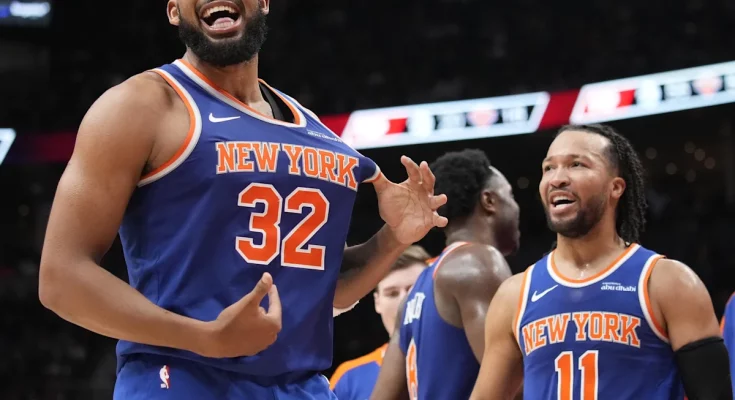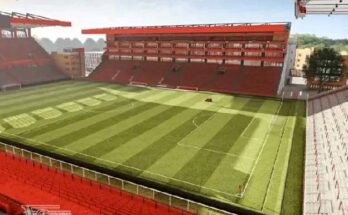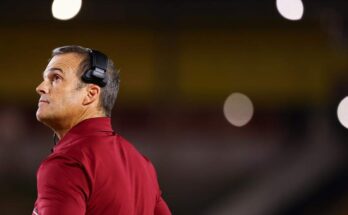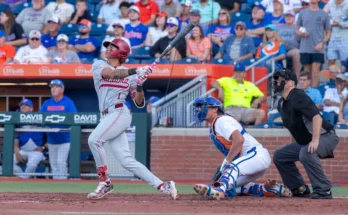How the New York Knicks Rose to the Top of the NBA Summer Rankings and What It Means for the Future
The New York Knicks have found themselves in a position that few could have predicted just a few seasons ago—ranked among the top teams in the NBA’s Summer rankings. This remarkable rise is not only a reflection of the front office’s strategic vision but also a culmination of disciplined roster building, player development, coaching excellence, and a shift in organizational culture. For a franchise that has long existed under the shadow of missed opportunities and unmet expectations, the Summer ranking is more than symbolic—it signals that the Knicks are finally building something sustainable and potentially elite.
For years, the Knicks were the epitome of dysfunction, often making hasty decisions in the free agent market and cycling through coaches and executives with little consistency. However, the current iteration of the Knicks is no longer operating in chaos. Under the leadership of President Leon Rose, General Manager Scott Perry (and later Gersson Rosas), and Head Coach Tom Thibodeau, the team has slowly crafted a roster that combines veteran toughness with youthful energy. This year’s high Summer ranking is a reward for the stability, patience, and long-term vision the front office has embraced since taking over in 2020.
One of the primary reasons the Knicks earned such high marks in this offseason’s team evaluations is the depth and balance of their current roster. Jalen Brunson has emerged as the franchise’s cornerstone—an elite point guard who plays with a blend of poise, intelligence, and toughness that embodies New York basketball. After arriving in 2022, Brunson quickly became the engine of the Knicks’ offense and a locker-room leader. His impact was so significant that it allowed the Knicks to reframe their identity around his leadership.
RJ Barrett, Quentin Grimes, Donte DiVincenzo, Josh Hart, and Mitchell Robinson have continued to play valuable roles, each bringing different dimensions to the floor. Barrett’s consistency and maturity have improved; Grimes offers perimeter defense and efficient shooting; DiVincenzo brings championship pedigree from his days with the Warriors and Bucks; Hart provides relentless hustle and elite rebounding from the guard spot; and Robinson remains one of the league’s premier offensive rebounders and rim protectors.
The Knicks’ biggest splash this summer, and the move that perhaps pushed them into elite territory in the eyes of evaluators, was their acquisition of Mikal Bridges from the Brooklyn Nets. This was a bold, aggressive trade that signaled New York’s intention to compete seriously in the Eastern Conference. Bridges is the kind of player who raises a team’s ceiling—an elite wing defender, efficient shooter, and high-IQ player who doesn’t need the ball to make a major impact. His addition gives the Knicks one of the best defensive lineups in the league and balances out their offense, especially on the wing.
The trade for Bridges not only brought a high-level player to the team, but it also reunited him with several of his former Villanova teammates. With Bridges, Hart, DiVincenzo, and Brunson all sharing a collegiate background at Villanova, there is a rare level of chemistry and familiarity that’s almost impossible to manufacture in the NBA. This built-in chemistry contributes to a unique cohesion both on and off the court. Chemistry often goes overlooked in NBA analysis, but it is crucial, especially when trying to navigate the rigors of an 82-game season and a deep playoff run.
Another reason the Knicks are gaining attention this summer is their asset flexibility. Despite the aggressive trade for Bridges, the Knicks have maintained a healthy collection of draft picks and young talent. They didn’t have to mortgage their entire future to acquire him, which is a testament to the patient way they’ve operated in recent years. Unlike in past decades, when the Knicks would sacrifice all future capital for aging stars, the current front office is being much more judicious with their assets. This puts them in position to be competitive now while also remaining opportunistic should another superstar become available.
On the coaching side, Tom Thibodeau continues to be a steadying force. While his methods may not appeal to every player, Thibodeau’s defensive philosophy and no-nonsense approach have resonated with this group. The Knicks are a physical, gritty team—exactly the type of roster Thibodeau thrives with. More importantly, he has shown some growth as a coach, becoming more adaptable in his rotations and offensive schemes. With a roster this deep, Thibodeau has more tools at his disposal than at any other point during his Knicks tenure.
In terms of player development, the Knicks are finally seeing returns on their investments. Players like Miles “Deuce” McBride and Jericho Sims have grown into reliable role players. Even second-round picks and undrafted players are finding niches in the system. The Knicks’ development staff has quietly become one of the better units in the league, giving the team more internal improvement options rather than relying solely on external acquisitions. Internal growth is one of the biggest indicators of long-term success in the NBA, and the Knicks are trending strongly in that direction.
The front office also deserves credit for its cap management. The Knicks have managed to avoid the luxury tax while fielding a highly competitive team. They have flexibility to make further moves if needed, whether at the trade deadline or next summer. That kind of financial prudence was unheard of in past Knicks regimes. This disciplined approach has allowed them to improve without overpaying for marginal talent, something that often crippled their past rosters.
Off the court, the Knicks have rebuilt their image. Madison Square Garden is once again a desirable destination for players, and the team’s success has brought the fans back in full force. The culture around the team feels different—less about spectacle and more about substance. Knicks basketball is relevant again, and that matters not just to fans, but to the league at large. When the Knicks are good, the NBA product benefits because of the size, passion, and loyalty of their fanbase.
Media perception has also shifted significantly. Where the Knicks were once the punchline of NBA discourse, they are now being discussed in terms of contention. The national media no longer frames their success as a fluke or accident. Analysts are beginning to acknowledge the intentional, well-thought-out process that has led them here. It’s a remarkable transformation for a franchise long associated with underachievement.
Looking ahead, the Knicks’ path is still challenging. The Eastern Conference remains deep, with teams like the Boston Celtics and Milwaukee Bucks still considered top contenders. But the Knicks are firmly in that second tier, with a legitimate chance to rise even higher. If the Bridges experiment works and players like Barrett or Grimes take another leap, the Knicks could be knocking on the door of a Finals appearance sooner than many expect.
Injuries and chemistry are always variables, but for once, the Knicks are not depending on miracles. They’ve built a team with a high floor and a potentially higher ceiling. The 2025 season could be the one where everything comes together—not through luck or coincidence, but through planning, vision, and execution. The Knicks are not chasing ghosts anymore; they are charting a new path, one rooted in basketball integrity and competitive fire.
This year’s Summer ranking is not a trophy, but it’s a milestone. It shows that the league is finally recognizing what’s being built in New York. For the fans, it’s a sign that the dark days may truly be behind them. For the league, it’s a reminder that one of its most storied franchises is no longer a laughingstock but a legitimate contender.
The Knicks still have work to do. Championships aren’t won in the offseason, and rankings don’t translate into playoff wins. But if this summer’s evaluation means anything, it means the Knicks are no longer a team to overlook or underestimate. They’re a threat. And for the first time in a long time, they look ready to prove it on the court, not just in headlines.



